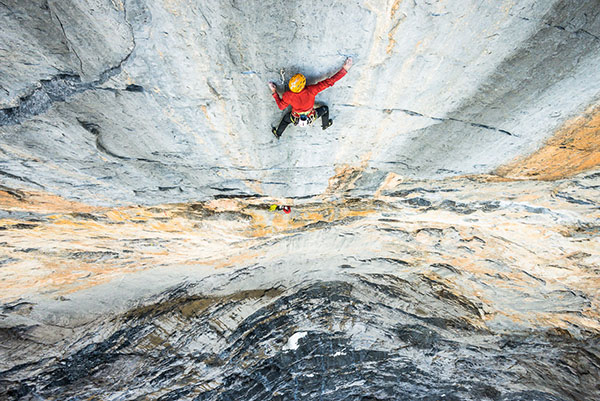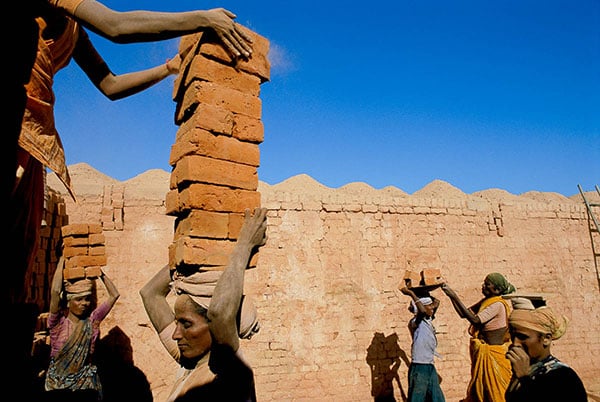10 Tips for Getting Hired as a Photographer, From Industry Pros
![]()
What are photo editors really looking for from professional photographers? And how can you make connections with potential clients and land gigs? We asked a number of photography trailblazers to share their best tips for how to get hired as a photographer.
1. Brad Smith, Director of Photography, Sports Illustrated
“I am exceptionally interested in a photographer with original story ideas. That’s one thing you can’t put value on. Some ideas might be cliche and have already been done, but I remind photographers that when you pitch an idea, the worst thing that can happen is someone says no. Don’t be shy about sharing.”
2. Elizabeth Krist, Senior Photo Editor, National Geographic
“The most important feature I look for in a photographer is dedication to long-term projects. Another major plus is having access to rare events or hidden worlds, and nowadays, expertise in video as well. Photographers who happen to focus on needed specialties—like archaeology—have a better chance of attracting my attention, too.
Securing a referral before you contact me, and putting that in the email’s subject line, is another good way to reach out to me. Underlying everything else, I would say the most crucial quality is integrity.

3. Emily Shornick, Photo Editor, The Cut
“I like people who are professional, who turn their contract in on time, and who take direction. They also have to have a strong eye. The ability to meet a deadline is number one, however. When you’re working in digital and something is half an hour late, it’s really late. It’s old news.
Also, this may seem very obvious, but pick up the phone. If I find a story that needs to be covered in two hours and a photographer doesn’t pick up the phone then I’m going to call someone else. This is not dating; this is digital photography. You can’t play hard to get.”
4. Kendrick Brinson and David Walter Banks, Commercial Photographers
“It’s essential to research a client before a meeting. We like to find out what campaigns they’ve worked on, what awards they’ve won, or, at the very least, what type of work their company does. Also, Google is your friend. If you’re walking into someone’s office, it’s vital to know what he or she needs from you and explain exactly why you’re the person to meet those needs.”

5. James Bellorini, Editorial and Documentary Photographer
“As often as I can, I will give something extra the client isn’t expecting and I don’t charge for it—like an additional re-sized image, for example. I know that might go against the grain of a lot of advice people give, but for me, my services have to be about the experience the client is getting. So anything that might be memorable or meaningful to them is positive in my book. It increases the chance that they will use me again or recommend me to other potential clients.”
6. Alexandre Buisse, Commercial Mountain Photographer
“When I started out, I really didn’t have any sales skills or experience, and this was probably toughest for me to learn. What helped the most was going to two big European outdoor trade shows, approaching people I didn’t know, and taking note of what worked and what didn’t. Each day I ended up absolutely exhausted, but I had a great deal more experience putting myself out there and a list of very valuable contacts.”

7. Kate Osba, Photo Editor and Curator, this is the what
“I am pretty conservative when it comes to what I like to see on a photographer’s website: white background, simple functions, large images, easy to navigate. What I do not like: a site that makes my window larger or smaller, anything super flashy. A successful site will showcase your style through your images, not through an overly designed site. There are, of course, exceptions to this, but in general I want to remember your work, not your website.”
8. Elizabeth Weinberg, Commercial & Editorial Photographer
“The most important thing to remember is to keep making new work, even if you feel like you’re in a slump. The internet now affords you unlimited free gallery space. You want as many eyes as possible to see your work. Come up with new projects and see them through. Make zines, do print giveaways, keep yourself active on social media, go to openings (and be a nice person!)—jobs can come from the strangest places and it’s all about staying visible and keeping your name floating above the noise.”
9. Lindsay Adler, Fashion & Portrait Photographer
“Rejection isn’t failure. It is a chance to learn and to grow. Rejection seems extremely difficult because our work is so personal to us, but that’s exactly what makes it so brilliant. Not everyone will like your work—and not everyone is supposed to. Know when to take critique and when to ignore it!”

10. Jodi Cobb, Photojournalist and Nat Geo Photographer
“It’s a wild world out there, but then it always has been. The earliest advice I was given seems to still hold:
Nothing ever happens when you’re ready. You’ll always be in over your head. Embrace it. Learn to love the fear.
Network like crazy, find a mentor, go to workshops and photography gatherings.
Be nice. People—editors, clients and your photography subjects—want to work with people they like and who will make life easier for them. Be ethical, follow up, don’t promise what you can’t deliver.
And from my mom: ‘No great chasm was ever leaped in two small jumps.’ Go for it. Don’t look down.”
This article is an excerpt adapted from Photoshelter’s new guide, The Inspiration Handbook: 50 Tips from 50 Photography Trailblazers.
About the author: Deborah Block works for the photography website provider PhotoShelter. This article was also published here.